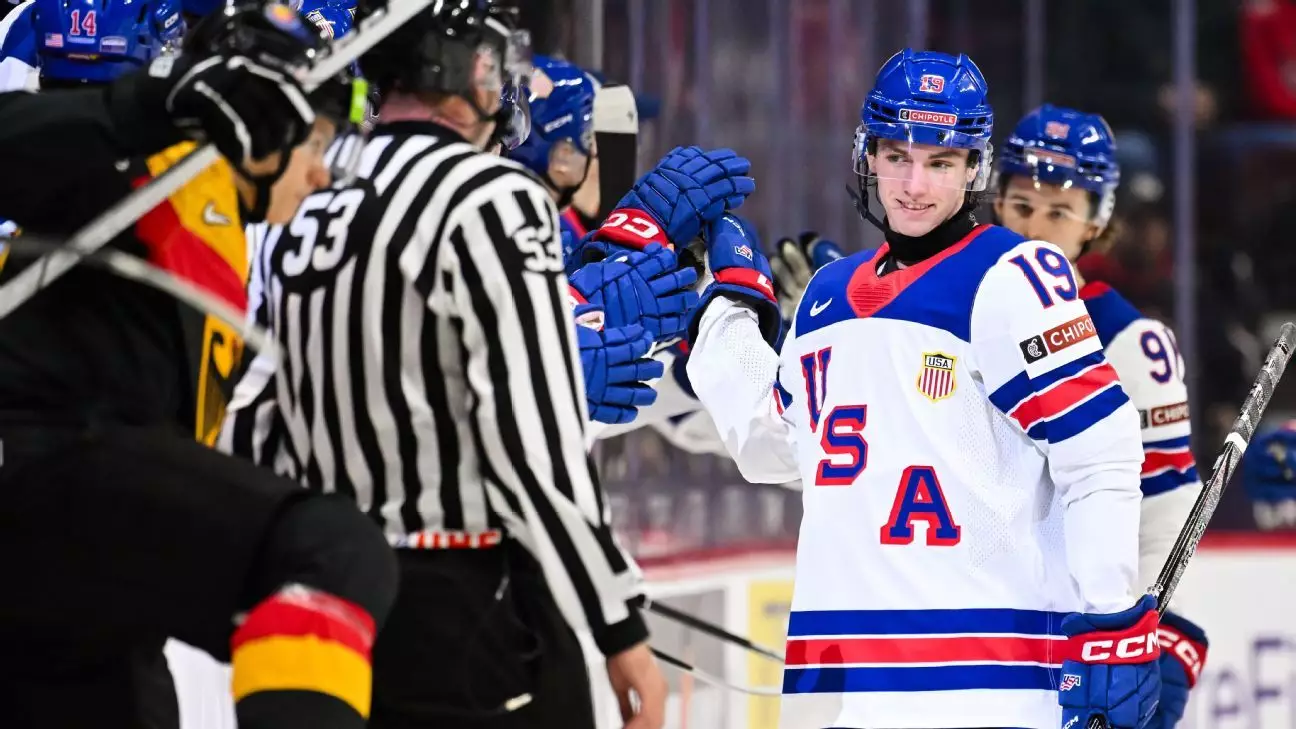Each year, the IIHF World Junior Championships showcase the most talented under-20 hockey players as they compete fiercely for national glory. While the spotlight naturally shines on athletic prowess and skill on the ice, an intriguing ritual has gradually emerged in the background—the selection of an anthem that echoes through the arenas each time a goal is scored. This tradition has added a unique flavor to the tournament, transforming it from merely a competition of skill to a vibrant cultural event. Just as fans anxiously watch who will lift the trophy, they also speculate eagerly on what tune will accompany each goal, making the goal song an essential piece of the championship puzzle.
For the 2025 edition of the tournament, all eyes turned towards the newly announced goal song, Opus’s “Live is Life.” This choice ignited a wave of commentary and critique, particularly in Canada, where the fans have developed a taste for more energetic, high-tempo tracks that energize stadiums. Comparisons to previous songs like “Let Me Clear My Throat” by DJ Kool and “Song 2” by Blur serve to underline the expectations and hopes surrounding the goal song. The reaction was mixed; while some embraced the nostalgic charm of “Live is Life,” others felt a sense of disappointment—a clear indication that expectations can weigh heavily on such a celebrated tradition.
In contrast to the Canadian response, the United States emerged as a frontrunner in the quest for the most engaging goal song with their choice, Lynyrd Skynyrd’s iconic “Free Bird.” This classic rock anthem carries immense gravitas, and its selection seems well-aligned with the team’s character and aspirations. As Team USA prepares to defend their title, the bold choice of a nearly ten-minute long song gives the impression of confidence and camaraderie among the players. University of Denver defenseman Zeev Buium played a pivotal role in this decision, illustrating how teamwork extends beyond the rink into the bus rides and shared moments off the ice.
The process of selecting a song speaks volumes about the players’ teamwork and deliberations. Buium’s account highlights a playful yet thoughtful brainstorming session among teammates. They weighed various options before agreeing that “Free Bird” encapsulated their collective spirit. Buium’s comments about waiting for the ideal moment in the song to celebrate underscore a fascinating juxtaposition—while the song carries a lengthy introduction, the anticipation builds excitement for the team and their fans alike. This strategy cleverly transforms the emotional experience of scoring into a shared moment that resonates deeply with everyone in the arena.
As the tournament unfolds, the U.S. team hopes to hear “Free Bird” play numerous times, solidifying its place as an anthem of victory. Its lively crescendo after the 4:45 mark—marked by guitars erupting with vigor—perfectly amplifies the intensity of each goal scored. The blend of nostalgia and high energy means that fans and players alike can relate to and revel in this choice, creating an unforgettable atmosphere filled with shared joy and camaraderie. Defender Cole Hutson’s assertion that it’s “one of the best ones in the tournament, for sure,” echoes the sentiment of players who long for a memorable celebration, bolstering their motivation as they gear up for challenges ahead.
The intertwining of music and sportsmanship enriches the narrative of the IIHF World Junior Championships. The goal song selections have become a microcosm of the larger tournament, encapsulating the hopes, dreams, and collective spirit of young athletes vying for victory. As we anticipate the remaining games, one thing is clear: the choice of goal songs will always generate discussions, debates, and, most importantly, a euphoric sense of unity among fans and players alike. Whether nostalgic or energetic, each song represents a defining moment in the journey to hockey glory—one goal at a time.

